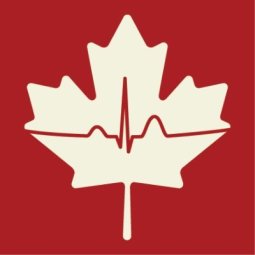Derrett S, Bevin TH, Herbison P, Paul C. Access to elective surgery in New Zealand: considering equity and the private and public mix. Int J Health Plann Mgmt 2009; 24: 147–160.
Background
Advocates of two-tier health care systems assert that having a privately-funded tier reduces demand for publicly-funded services, thereby taking pressure off the public purse. They claim that patients who pay privately are freeing up capacity on public wait lists, thus increasing access to care for those who cannot afford to pay.
New Zealand allows patients to access publicly-funded care, or to privately purchase care by paying out-of-pocket or through private insurance. A scoring system, based on medical need, prioritizes scheduling of publicly-funded elective surgeries. Patients who do not wish to wait for care in the public system are free to jump the queue and pay privately for faster care.
This study evaluates the extent to which publicly- and privately-funded elective surgery affects equity.
Methods
Using data from the New Zealand Health Information Service (NZHIS), this study examined four common surgical procedures: hip replacement, knee replacement, prostatectomy, and cataract surgery. Data were obtained between 1 July 2000 - 30 June 2005 (publicly provided), and 1 January 2000 - 31 December 2002 (privately provided).
To examine equity of access to elective surgery, age-standardized procedure rates in both public and private sectors were derived for patients in the three lowest socioeconomic deciles.
Limitations
The investigation is limited by incomplete data on privately provided procedures (private facilities are not required to report surgery discharges to NZHIS), the small size of some health districts which increases the likelihood of fluctuations, and an assumption that the need for elective procedures does not vary by region or socioeconomic status.
Results
Generally, the regions with the lowest public provision also had the highest private provision for both total joint replacement and prostatectomy. Excluding outliers, the correlation between the rate of public provision and the ratio of public to private provision (weighted by the inverse of the variance of the estimate) was moderate and statistically significant for total joint replacement (r=0.74, p=0.0003), and prostatectomy (r=0.74, p=0.0002). In the three most deprived socioeconomic deciles, access to publicly-funded surgery for total joint replacement was poorest in areas with high rates of privately funded surgery (r=.50, p=0.021).
Comment
Provision of privately-funded surgery was not associated with better access to publicly-funded surgery.
New Zealand’s priority booking system was designed to eliminate major variations in public provision, but it did not achieve this objective even though patients are permitted to jump the queue and pay privately. Public surgery rates were lower in regions with higher private surgery rates, and access to surgery for lower income people did not improve where privately provided surgery is greater. In fact, regions with higher private surgery rates have reduced rates of joint replacement surgery for poorer people.
This research provides evidence against the argument that private payment reduces the burden on the public system allowing better access for those unable or unwilling to pay privately. One contributing factor may relate to the availability of doctors. When doctors in predominately public systems are also permitted to work in the privately-funded sector, they are logically less available to serve patients in the public sector. The research from New Zealand suggests that the unregulated nature of commercial surgical activity leads to inequity, with surgeons being attracted to the higher remuneration in those settings. This dynamic is especially potent where highly skilled health-care professionals are a limiting factor, as is true in New Zealand and in most countries, including Canada.
An alternative explanation for the decline in public surgery rates might be that increased private provision reduces the pressure on governments to adequately fund the public sector, thereby affecting public waiting times and encouraging compensatory growth in the private sector.
The B.C. Supreme Court will soon try a landmark constitutional challenge to determine whether private clinics should have the right to extra-bill patients for medical services, including patients who wish to jump the queue for faster access. Evidence from New Zealand, and elsewhere, demonstrates that a parallel private sector does not appear to have a positive effect on the equitable provision of elective surgery.
